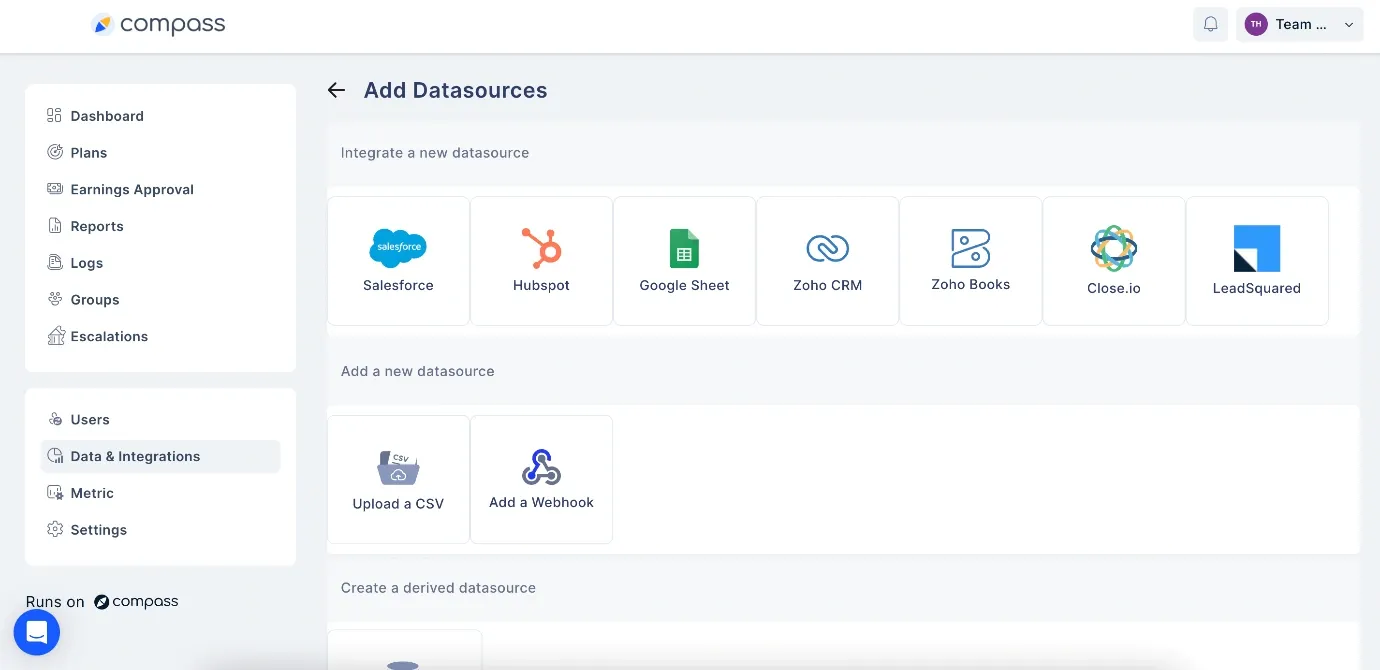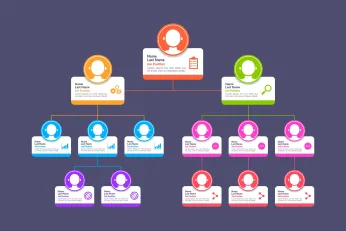Casser les silos de données : stratégies pour des opérations de vente sans faille
Data silos hinder business efficiency, leading to lost time and poor decision-making. Discover how to break down silos, streamline operations, and drive growth with effective data integration strategies.
Sur cette page
Did you know that data silos are causing employees to lose an average of 12 hours per week chasing data. This staggering statistic underscores the urgent need for businesses to address and eliminate data silos in their sales operations.
In the mid-1990s, Starbucks, America’s coffee giant partnered with Pepsi and launched Mazagran, a coffee-flavored soft drink that was sold in grocery stores.
Starbucks’ market research team told its product team that their customers want a coffee-flavored week drink that is easily accessible.
What they did not tell them is that customers wanted it to resemble a milkshake and not soda.
Customers described the taste as ‘interesting’ at best. The product was a spectacular failure and was pulled off aisles after the initial curiosity failed. A classic example of communicating (or not) insufficient and incorrect data and insights. That is what happens when people don’t talk to people and well, tools don’t talk to tools. That’s scary!
And that is exactly what data silos are.
In this blog, we will learn what data silos are, why they occur, and effective strategies to deal with them.
What are data silos?
Data silos are like separate storage areas for information within a company. They occur when different teams or departments develop their methods for storing data, creating barriers to sharing information across the organization. This isolation leads to inefficiencies, duplicate data, and increased costs.
Data silos hinder effective decision-making and prevent businesses from having a comprehensive view of their operations. Resolving data silos involves integrating systems and processes to ensure that information can be accessed and shared seamlessly across the organization.
Why do data silos occur?
Data silos emerge when organizations adopt new technologies, SaaS services, or separate data warehouses. As different functional units establish their own databases or draw from various data sources, it becomes common to have multiple information systems that lack meaningful connections. This fragmentation leads to the creation of silos within the same business.
1. Lack of awareness and communication
Often, teams do not share information because they are unaware of how other departments could benefit from it. This lack of understanding can lead to the unintentional emergence of data silos.
2. Organizational growth and structural divisions
As organizations expand, with more employees and branches, structural divisions can develop. New hires may introduce diverse approaches to data management. While this can foster innovation, it may also negatively impact operations if a robust data management plan is absent. Larger organizations are particularly prone to creating data silos, whether organically or as a means for teams to maintain control over information.
How does data silo take place in sales?
Many sales teams maintain their data in various formats, such as Excel sheets, notepads, or documents. Often, they track prospects in spreadsheets and record meeting notes separately, leading to fragmented data management. This isolation can occur at an individual level and can be magnified when it happens across an entire sales team.
1. Challenging centralized data
You might think that using a Customer Relationship Management (CRM) system alleviates this issue. While having a CRM centralizes data storage, it does not guarantee its accessibility or real-time relevance. Data becomes less useful if it is not updated promptly and lacks transparency. Even if one part of your process remains manual, your data cannot be truly real-time. Manual processes are prone to errors and can be slow and tedious.

To address this, Compass integrates seamlessly with existing systems and CRMs through APIs and webhooks, ensuring that your data is consistently updated. With ready integrations available for platforms like Close and Salesforce, Compass enhances collaboration across your sales team.
2. Lack of real-time insights
One of the standouts features of Compass is that it provides sales representatives with a real-time view of their earnings. This immediate access serves as motivation and allows them to understand their earning potential better. Sales managers can also generate reports instantly, eliminating the hours spent waiting for accurate sales data.

The best part, your sales reps can also have a real-time view of their earning that motivates them. With real-time nudges, they also have easy and real-time access to their earning potential. Your sales managers and leaders no longer have to wait for hours and pray with all their might for correct sales data. They can configure reports in real-time.
4 reasons to break down data silos for your sales team
Here are four compelling reasons to prioritize this initiative:
1. Better decision-making
Eliminating data silos fosters a seamless flow of information across departments. Sales teams gain access to vital insights from marketing and customer service, enabling them to make informed decisions that enhance the customer journey.
2. Improved customer experience
Integrating data ensures consistent and personalized customer interactions. When sales teams have comprehensive access to customer information, they can tailor their approach, leading to increased satisfaction and loyalty.
3. Enhanced operational efficiency
Addressing data silos streamlines workflows by reducing redundant data handling. This efficiency minimizes the time spent searching for information and allows sales teams to focus on what matters most—closing deals.
4. Encouragement of innovation
A unified data environment promotes collaboration and innovation. By sharing insights across departments, teams can develop strategies and products that align closely with customer needs, giving your business a competitive edge.
By prioritizing the dismantling of data silos, your sales team can unlock valuable insights that drive growth and success.
4 steps into breaking the data silo in sales team
Breaking down data silos is crucial for your sales team's success. Here’s how to effectively tackle this challenge:
1. Identify and assess data silos
Recognize where data is isolated within your organization. Assess the impact of these silos on customer experience and decision-making. For instance, fragmented information can lead to missed sales opportunities and inefficiencies across departments.
2. Develop a comprehensive data strategy
Create a strategy that outlines goals for data integration and management. This should include selecting the right tools for seamless data flow and ensuring accuracy. Training employees on best practices fosters a culture of collaboration.
3. Implement integration tools
Utilize data integration tools to connect disparate systems, allowing your sales team to access a unified view of customer information. This leads to informed decisions and enhances customer interactions.
4. Encourage a culture of sharing
Promote collaboration among teams by emphasizing the importance of sharing insights and data. A unified approach not only improves operational efficiency but also drives innovation, giving your business a competitive edge.
This lack of accessibility led to inconsistent data quality, resulting in poor decision-making and inflated operational costs. To combat these issues, the organization implemented advanced data integration tools to consolidate information into a unified data warehouse, established a robust data governance framework to ensure data consistency, and leveraged advanced analytics for improved insights.
The results were remarkable: the healthcare payer saved nearly $4 million annually by eliminating operational inefficiencies and redundant tasks. Enhanced data quality led to better analytics and reporting capabilities, while improved access to integrated data significantly boosted operational efficiency across departments.
By breaking down data silos, the organization not only optimized its operations but also enhanced the quality of care provided to its members, demonstrating the critical importance of effective data management in the healthcare sector.
4 Strategical tips to getting rid of data silos in sales team
Data silos occur when databases are isolated, leading to outdated information. Phone numbers, emails, and customer statuses change frequently, making manual import/export processes inefficient and error prone. To overcome these challenges, consider the following strategies
1. Choose an all-in-one solution
Investing in platforms that unify data management simplifies communication across sales, marketing, and customer support teams. This alignment reduces fragmentation and fosters smoother data sharing.
2. Search for applications with native integrations
Look for applications that offer built-in integrations to streamline data flow between systems, enhancing efficiency without additional complexity.
3. Create a collaborative company culture
Encourage cross-departmental collaboration through initiatives like regular team-building activities. This fosters a culture of data sharing and enhances overall data literacy.
4. Establish a centralized data governance framework
Implement clear guidelines for data management to standardize access and eliminate barriers between teams, ensuring everyone can utilize the information effectively.
Combat data silo with Compass
More data isn’t always better; too much raw data can hinder decision-making rather than improve it. Leaders, including CEOs, spend a significant portion of their time in meetings, which can be inefficient without the right information. Instead of tracking everything, leaders should focus on relevant, real-time, and predictive data to make informed decisions.
This is where Compass steps in as a game-changer. It equips sales leaders and CXOs with contextual, real-time, and actionable data. By automating commission calculations and payouts, Compass minimizes delays and enhances efficiency. Its features include:
- Program design tools
- Target-setting capabilities
- Milestone-based interactive game templates
- Live leaderboards
- Comprehensive program analytics
- A global catalog with over 16,000 reward options
With Compass, organizations can manage incentive programs end-to-end efficiently. Schedule a demo call with us now!
FAQs
1. What is an example of a data silo?
A CRM system storing customer data that is not accessible to the marketing or support teams.
2. What are the 3 major types of silos in business?
Data silos in business are:
1. Data silos (isolated information across departments),
2. Organizational silos (lack of collaboration between teams),
3. Technology silos (incompatible systems that don’t integrate).
3. How do you identify data silos?
Look for duplicate or inconsistent data across departments, lack of cross-functional collaboration, and systems that don’t integrate with each other.
4. Why are data silos problematic?
They reduce efficiency, create inconsistencies, hinder decision-making, and limit collaboration across teams.













